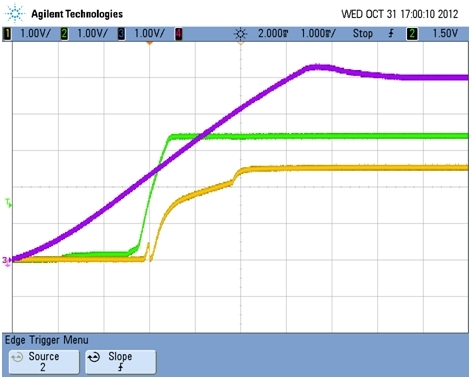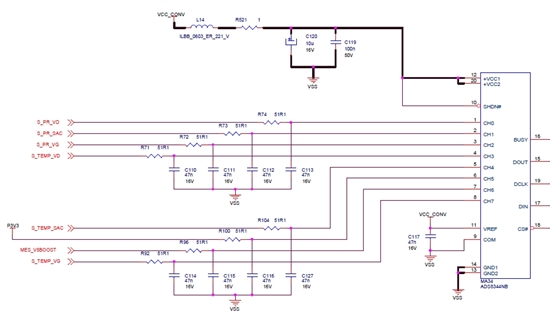Hi,
I have encountered the case of an ADS8344NB sourcing seemingly too much current. The symptom was that the 5V supply sourced by a linear regulator was collapsing until I disconnected pins 10, 11, 12 and 20 of the ADS8344 where this voltage was tied.
Is there any knowledge base about the way an ADS8344 could fail this way?
Our first analyse led to suspect a voltage measure on an analog input (pin 6) which grows half a millisecond before the converter 5V supply, thus exceeding the max rating (Vcc+0.3V).
On this plot : blue trace = ADS8344 +Vcc ; green trace = analog channel 5 input (pin6), every channels are used in single-ended mode.
This could habe been repeated roughly 30-50 times in the device's life.
Could it be the reason of the failure?
Thanks for any comment,
Best Regards,
Eric.



